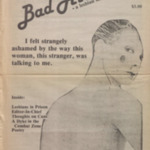
Browse Curated Themes
-
“Becoming Visible: Survival for Black Lesbians”
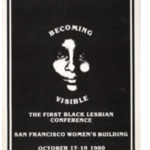 “Becoming Visible: The First Black Lesbian Conference” grew out our of from the First National Third World Lesbian and Gay Conference by the National Coalition of Black Lesbians and Gays which was held in 1979, in Washington, DC. Although there had been previous conferences supporting both lesbians and gays, the First Black Lesbian Conference was the first in the United States with the mission to support the unique and African-Americans lesbians.
“Becoming Visible: The First Black Lesbian Conference” grew out our of from the First National Third World Lesbian and Gay Conference by the National Coalition of Black Lesbians and Gays which was held in 1979, in Washington, DC. Although there had been previous conferences supporting both lesbians and gays, the First Black Lesbian Conference was the first in the United States with the mission to support the unique and African-Americans lesbians. This exhibition highlights materials that were created in the planning phase of this conference by members of The Committee for The Visibility of the Other Black Women, who organized from coast to coast.
-
Conversations in Radio, Art, and Music: Lesbian Dialogues
The dialogues of lesbian lives and ideologies are closely intertwined with feminist action and perspective. In this exhibition, we’ll outline some of the currents that have aligned these two conversations. We will also highlight pieces from our digital collection where these dialogues manifest in radio, art, and music, and we’ll explore the spaces where those took place.
Navigate to “Women’s Spaces” to learn about the evolution of feminist broadcasting, or visit “Feminist Movements” to understand the different conversations that arose from consciousness raising, Black lesbian feminism, and lesbian separatist movements. You can also visit the “Related Materials” page to find referenced materials, related works from our collection, as well as a list of our sources.
The graphic below visually represents the expansive network of feminist radio programming uncovered in the research for this exhibition. Through exploring these connections, we seek to understand how and why they formed, and we also delve into the conversations that were simultaneously ignited in other forms of media and expression.
Consciousness Raising, Lesbian Feminism, Lesbian Separatism, Music, Radio
-
Daughters of Bilitis Video Project
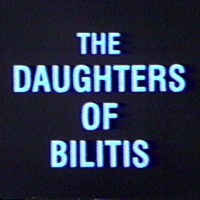
This collection is composed of videos digitized from the Daughters of Bilitis Video Project collection at the Lesbian Herstory Archives. The Daughters of Bilitis was a social and activist group founded in 1955. The Video Project began in 1987 and was sponsored by the Lesbian Herstory Educational Foundation Inc. The project was originally based on a suggestion by Morgan Gwenwald, who wrote several grants to help fund the project and contributed all of the still photographs included in the collection. An additional two founding members of the DOB contributed to the project: Sara Yager, who videotaped all the interviews, and Manuela Soares, who researched and conducted all of the interviews.
The purpose of the project was to gather interviews with the founders and former members of the Daughters of Bilitis in order to document their critical role in the gay/lesbian liberation movement, as well as the Civil Rights movement. The interviews gathered here focus on the formation and impact of the many DOB chapters that were formed around the country. Interviewees discuss their childhoods, sexual awakenings, personal relationships, first encounters with Daughters of Bilitis and their perspectives on the purpose and impact of the organization. Gwenwald, Soares and Yager traveled around the country to interview and document the many DOB chapters and their members.
Some of the issues discussed are: whether Daughters of Bilitis was primarily a social or activist group, DOB’s treatment of assimilation, and the "theft" of The Ladder – the DOB’s publication. For more information on The Ladder, see: The Journal of Homosexuality, “The Purloined Ladder,” Volume 34, Numbers 3/4, 1998.
For more on the DOB, see: Gallo, M. (2007). Different daughters: A history of the Daughters of Bilitis and the rise of the lesbian civil rights movement. Berkeley, CA: Seal Press.
Students at the Pratt Institute’s Library and Information Science Program have digitized the videos gathered here from VHS tapes. This is a comprehensive collection of the interviews gathered for the Daughters of Bilitis Video Project. The original materials are held in off-site storage by the Lesbian Herstory Archives.
From: Morgan Gwenwald, Manuela Soares and Sara Yager.
Transcriptions of many of the videotaped interviews are available, thanks to Ruth Helmich, Kelly Anderson, Trista Sordillo, Manuela Soares, and others.
-
Documenting Dissent
This exhibition features a selection of feminist and lesbian programs which ran on WBAI radio in New York amidst the second wave of feminism around the 1970s. These selected programs form feminist networks that explain, document, and grapple with women’s experiences of violence under the patriarchy.
The first section examines where instances of patriarchal violence often occur and the difficulty in reporting said instances of violence. The second section underlines the way the patriarchy is structured upon violence against women, the naturalization of this violence as a fact of life, and the violent transmisogynistic and transphobic rhetoric that follows. The last section is dedicated to anger and its transformative properties in the liberation of women, specifically focusing on criminalized and incarcerated women.
-
Dyke TV
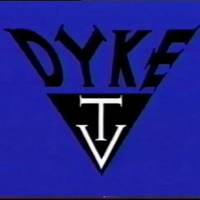
Dyke TV was a groundbreaking public access program founded in 1993 by Mary Patierno, Ana Marie Simo and Linda Chapman. An offshoot of the Lesbian Avengers, the mission of Dyke TV was to incite, provoke and organize communities to create tangible change. The program sought to increase lesbian visibility and to systemically change people's views of lesbians, gay rights and women's rights. Dyke TV comprehensively documented a critical time period in gay and lesbian history and shared stories that were important to lesbian communities when no other programs were.
The program first aired in June 1993 on the Manhattan Neighborhood Network public access television channel. The show started off as a weekly 30 minute program produced by a core of Dyke TV producers with help from members of the community. The show followed a magazine format. Each program consisted of various segments such as I Was a Lesbian Child, The Arts, From the Archives, News and Eyewitness. Some areas of interest included lesbian history, daily life, activism, and international LGBTQ issues. Ideas for stories were discussed during production meetings and the producers welcomed ideas from everyone involved. According to one of the program’s co-founders and executive producer, Mary Patierno, “if anybody wanted to do a story we let them do it. We were there to let people voice whatever they wanted to, whatever issues or topics that were of interest to them.” The producers aimed to create a very well rounded program that could highlight lesbian life from as many angles as possible. Another part of Dyke TV’s mission was to train women in video production. The producers conducted regular workshops so that women could learn how to tell stories they wanted to tell in their own voices. This community oriented attitude allowed for widespread contributions about lesbian issues across the United States and abroad. At its peak, Dyke TV was distributed on 78 public access channels throughout the United States. Dyke TV documented many political actions happening in the early 1990s within the LGBTQ community, including actions by ACT UP and the Lesbian Avengers.
The Dyke TV collection at the Lesbian Herstory Archives consists largely of unedited footage that documents marches and demonstrations in New York City. Other tapes include incomplete episodes and compilations of show segments. Segments available to view in this exhibition include “The Arts,” “News,” “Eyewitness,” “I Was a Lesbian Child,” and “From the Archives.” This does not however represent the complete range of segments seen on Dyke TV; other favorites not seen here included Lesbian Health, On the Street, and Ann Northrop Mouths Off.
-
Feminist Frequencies of the 1970s: Tuning into Women's Words
Feminist Frequencies of the 1970s: Tuning into Women's Words explores the role of radio programs in amplifying the voices of women in the written word—writers, poets, journalists, songwriters, and playwrights—within feminist and lesbian communities. These broadcasts emerged during a cultural moment when access to traditional publishing and media remained limited for many women, particularly those whose work challenged patriarchal norms or celebrated lesbian identity. Radio became a vital medium through which these creators could bypass institutional barriers, reaching audiences directly with their words and ideas.
The roots of this movement can be traced to the broader second-wave feminist ethos that sought to "name the unnamed" and "speak the unspeakable," advocating for women's experiences to be articulated and validated in the public sphere. Inspired by grassroots organizing and collective empowerment, feminist and lesbian radio programs primarily began as volunteer-led initiatives on community radio stations, fueled by the passion and creativity of their producers. These programs typically featured readings, interviews, and discussions, offering a platform for emerging and established voices such as poets Adrienne Rich, Audre Lorde, and Marilyn Hacker, playwright Myrna Lamb, and authors like Kate Millett and Bertha Harris.
By highlighting women’s literary and creative contributions, they not only broadened the scope of feminist discourse but also solidified the connection between feminist art and activism. These programs nurtured a sense of belonging among listeners who heard their realities and aspirations reflected in the works shared on air. They also inspired a new wave of feminist writers and creators who recognized radio as a powerful medium for storytelling, resistance, and community engagement.
Moreover, these broadcasts challenged dominant narratives, critiquing the exclusionary practices of mainstream publishing while reclaiming storytelling as a means of empowerment. They served as both a refuge and a rallying point, offering intellectual and emotional sustenance to feminist and lesbian movements of the time. By preserving these voices and programs in Feminist Frequencies, we acknowledge the enduring legacy of women who used the airwaves to shape a more inclusive cultural landscape.
See the collection here: WBAI Radio Programs, circa 1970s.
Autobiography, Feminist Theater, Lesbian Authors, Lesbian Musician, Lesbian Writer, Literature, Performing Arts, Poetry, Publications, Theater
-
Lesbian Nation
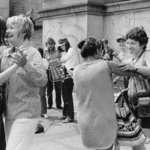
Lesbian Nation was a groundbreaking radio show produced and hosted by Martha Shelley (1943 - Present), that specifically focused and revolved around the LGBTQ community during the rise of gay and lesbian liberation movements in the 1970s. After college, Shelley joined the Daughters of Bilitis (DOB) (1955-1995), a lesbian civil and political rights orgaanization, eventually becoming president of the NY chapter. Shelley was one of the early members of the Gay Liberation Front (GLF) which was established immediately after the Stonewall Riots and which advocated for for LGBT and minority rights. Additionally, Shelley wrote for several publications and was an avid advocate for civil rights and the pro-choice movement.
In Lesbian Nation, dozens of prominent women in the LGBT community are interviewed. Shelley featured interviewees from all walks of life who discussed important topics including: activism, feminism, politics, community, art, media, sports, and so on. These interviewees povided context and perspective to the aforementioned issues and engaged in critical discussion with Shelley about current affairs at the time.
Provided here is biographic information on a small collection of interviewees. For some interviewees, there is only a limited amount of information available at this time. You can learn more about the them under "Lesbian Nation Interviewees". We hope to expand this section as more information becomes available. Under "Audio Recordings", you can listen to the episodes in which the interviewees appear.
About the exhibition cover image: Lesbians dancing at the steps of the Museum of Natural History in New York is from 1973, and features Martha Shelley with a tape recorder on the far right. Photo by Bettye Lane.
-
No More Invisible Women Exhibition
The Women’s Committee of ACT UP NY worked to prevent exclusion of women and minorities from clinical and experimental drug trials. From 1988-1989, the Women’s Committee conducted extensive research to support the cause. The committee dove deep into medical reviews, conducted interviews with women infected with AIDS, doctors who had treated women with AIDS and created a list of the infections specific to women. Their research was organized into three categories and became the basis of future actions. Their work focused on:
- Changing the definition of AIDS to include the symptoms specific to women and injection drug users
- Changing the disability regulations so that the Centers for Disease Control (CDC) definition would finally allow infected women and injection drug users to be awarded disability
- Changing the Federal Drug Association’s (FDA) regulations so that women would be admitted to clinical trials
No More Invisible Women, is an exhibition that showcases the incredible work of the Women’s Committee of ACT UP New York. The featured audio and visual recordings are focused on four actions: the Target City Hall action, and actions which met with three governmental institutions: the CDC, the FDA, and the National Institute of Health (NIH). These excerpts of original video footage and audio recordings bring to light the outstanding achievements of the Women’s Committee and celebrates the efforts and activism that helped accomplish a long overdue justice for women with AIDS.

The activists who fought for recognition of women's health issues with regards to AIDS were people of color, women, and PWAs (people with AIDS) working together to get our federal health institutes to prioritize women's health. And it was a difficult, lengthy, and painstaking process, but, in the end, they won.

Source: Maxine Wolfe's "A BRIEF (and not complete) History of Women Focused Actions by ACT UP"
-
Reflections on Lesbian Fashion: Expression Through Style
The focus of this exhibition is to highlight the history and significance of lesbian style and identity. Particular clothing items, accessories, colors, and so on have long been used as signals amongst LGBTQ+ people to let each other know they are "in the family" without outting themselves to those who were not in the know. Further, lesbian style is inherently subversive and frequently political, in ways that have evolved throughout time alongside the evolution of mainstream fashion trends and norms.
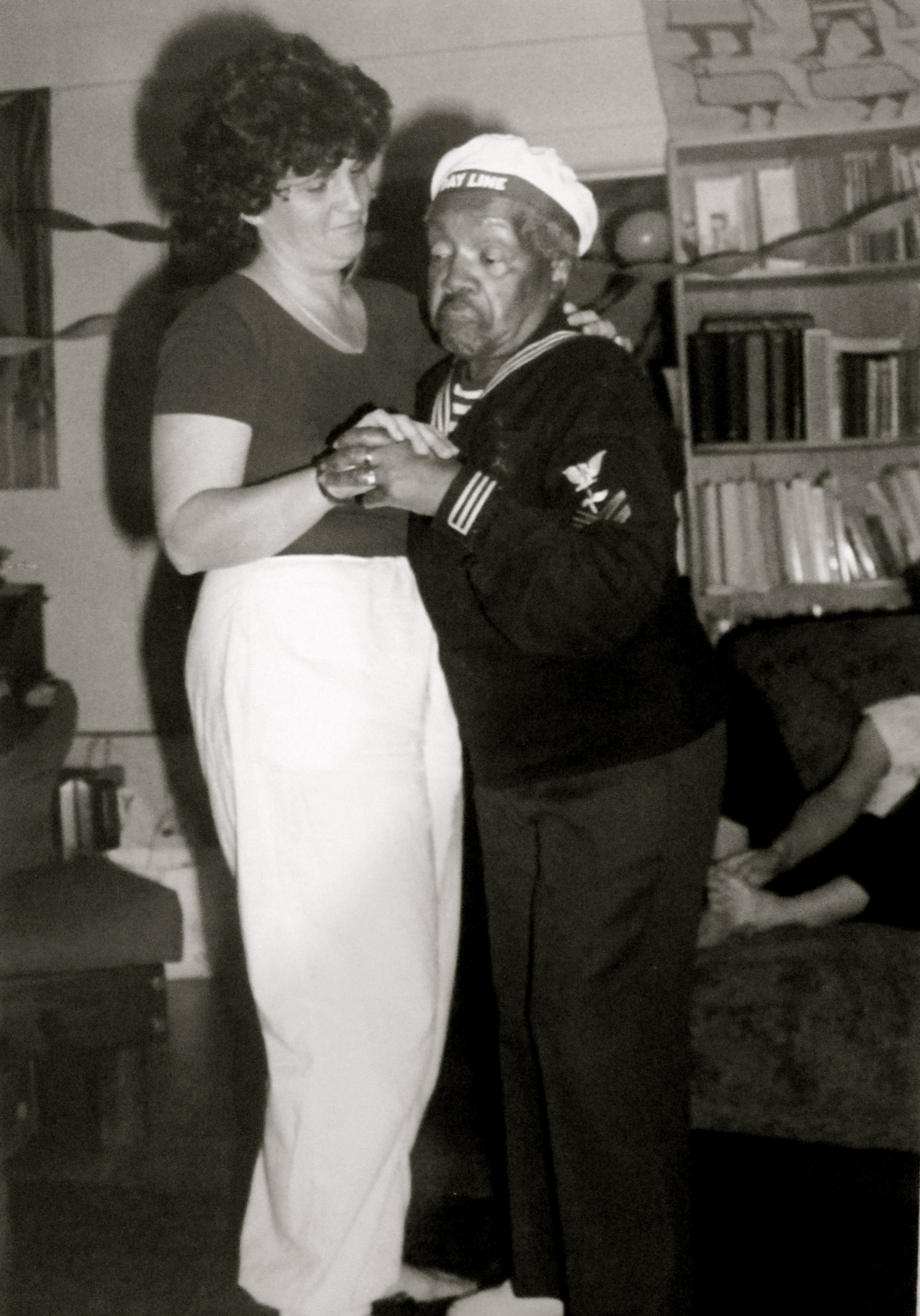 Thus, expression through style is an integral part of the lesbian experience, and this exhibit gathers together a range of materials pertaining to lesbian expression through clothing and style. This exhibit features materials from several collections within the archive: the History of New York Lesbian Style oral history project by Alaina Zulli, select tapes from the Buffalo Women's Oral History Project and the Mabel Hampton Oral History Project, a tape from the Daughters of Bilitis collection, and the one woman show "Que Será Será: A Life’s Journey of Sexual Orientation and Gender Expression" by Zelda aka Judith Z. Miller. What all of these materials hold in common is their subjects' reflections on the role that clothing and style have played in their expression of their lesbian identity.
Thus, expression through style is an integral part of the lesbian experience, and this exhibit gathers together a range of materials pertaining to lesbian expression through clothing and style. This exhibit features materials from several collections within the archive: the History of New York Lesbian Style oral history project by Alaina Zulli, select tapes from the Buffalo Women's Oral History Project and the Mabel Hampton Oral History Project, a tape from the Daughters of Bilitis collection, and the one woman show "Que Será Será: A Life’s Journey of Sexual Orientation and Gender Expression" by Zelda aka Judith Z. Miller. What all of these materials hold in common is their subjects' reflections on the role that clothing and style have played in their expression of their lesbian identity.References:
“Secret Symbols and Signals.” LGBT+ Cultural Heritage, https://www.lgbtculturalheritage.com/secret-symbols.
“‘What The Well Dressed Dyke Will Wear’ at The Museum Of Modern Art.” DYKE A Quarterly, 9 Dec. 2017, https://www.dykeaquarterly.com/topic-lesbian-history-1970s-and-1980s/.
-
Ruthie + Connie
Ruth Berman and Connie Kurtz, who have come to be known collectively as "Ruthie and Connie," were friends and community activists who became lovers and lesbian activists. Meeting for the first time in 1957 a married woman with young families in the Gravesend neighborhood of Brooklyn, New York, they didn't know that their personal lives would become very political during the next 50 years.
-
The Lesbian Avengers
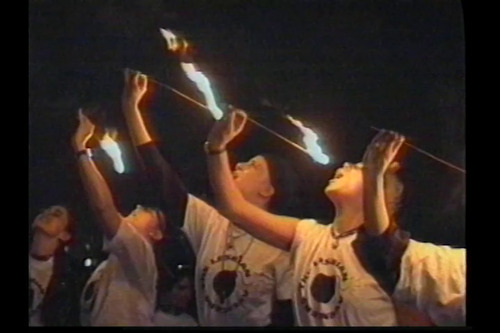
History
Founded in 1992 in New York City, the Lesbian Avengers were a direct action group focused on lesbian visibility and survival. Unsatisfied with lobbying or letter writing, Lesbian Avengers took to high-impact street activism aimed to propel lesbians into public society anddiscourse. The founding members, Ana Simo, Sara Schulman, Maxine Wolfe, Anne-christine d'Adesky, Marie Honan, and Anne Maguire, were all active members of various LGBT groups throughout the 80s and 90s. Frustrated by a severe lack of visibility on lesbian issues these women met together to establish a mission, a name, first actions, and media production, drawing inspiration from other lesbian-centered collectives and organizations. Once formed, it wasn’t long before the group began to expand within the United States. The group’s success was due in part to a narrow focus on lesbian issues, and participants who were young, passionate, and media ambitious. Its influence spread worldwide after the Dyke March on the eve of the Lesbian and Gay March on Washington in 1993.
Usage of Media
The Lesbian Avengers relied heavily on the media to gain the visibility necessary to discuss lesbian issues. Visual impact shaped the Lesbian Avengers approach to activism, from creating outreach and propaganda committees, to headlining local news stories, to the creation of the Lesbian Avenger Handbook. Media was a necessary vessel to infiltrate and create lasting impact—the Lesbian Avenger Handbook was specifically created to establish guidelines on press literacy and how to attract press attention. These approaches, however, were not always successful, and the Avengers struggled to gain wider media attention. Nevertheless, when they could not capitalize on the power of the press through material creation, they relied on strategic attacks, organizing protests at magazine publications, radio news channels, and more.
One of the most critical aspects of the media created by the Lesbian Avengers was its internal impact. While the Avengers’ media campaign obviously aided in efforts to increase lesbian visibility in public discourse, it was also useful in exposing young activists to newsletters documenting lesbian life and party flyers advertising social events in the community. These physical objects served as necessary tools to recruit, connect, and defend the Lesbian Avengers and its mission, and also fostered a sense of togetherness and understanding.
Fire-Eating
The Lesbian Avengers adopted fire-eating in response to the 1992 fire-bombing of the apartment of Hattie Mae Cohens and Brian Mocks. This tragic murder prompted Avengers at a West Village encampment to march, carrying torches and burning pictures of prominent anti-LGBTQ figures in protest against LGBTQ violence. Choreographer Jennifer Monson introduced the action of eating the fire, marking it as a symbol of reclamation for the Lesbian Avengers. The act itself is meant to both draw attention but also serve as symbolism for lesbian visibility—"the fire will not consume us. We take it and make it our own."
Dyke March
Dyke TV and the Dyke March stand as pillars of visibility and empowerment within the LGBTQ+ community, united in their shared mission of amplifying lesbian voices. Founded in 1993 by Ana Maria Simo, Linda Chapman, and Mary Patierno, Dyke TV revolutionized television programming by providing a platform exclusively dedicated to lesbian narratives and issues. Broadcasting nationwide until 2005, Dyke TV reached millions of households, offering a diverse array of content spanning art, news, politics, and culture. The project’s goal was to draw focus to lesbian communities as well as align with the broader goals of LGTBQ+ activism: challenging stereotypes and advocating for social change.
Similarly created in 1993 as a response to the marginalization of lesbians within mainstream Pride events, the Dyke March quickly grew into a global phenomenon. Rejecting corporate sponsorship, the March prioritized inclusivity and activism, reclaiming public space and celebrating the diversity of lesbian identities. The Dyke March embodies the spirit of resistance and solidarity, empowering individuals to take ownership of their identities and advocate for their rights.
Both Dyke TV and the Dyke March recognize the importance of intersectionality in LGBTQ+ activism. Dyke TV’s commitment to showcasing diverse voices and experiences reflects an understanding of the intersecting oppressions faced by lesbian communities. As pioneers in their respective fields, Dyke TV and the Dyke March have played important roles in shaping LGBTQ+ culture and activism by providing platforms for storytelling and advocacy, and continue to inspire future generations to embrace their identities, resist oppression, and strive for a more inclusive world.
Impact & Legacy
While the Lesbian Avengers’ first chapter was based in New York, their message soon took hold all over the country. Aside from organizing events like the Dyke March, the Lesbian Avengers held protests across the globe, often in response to injustices and hate faced by lesbians. The burning of a trailer owned by Florida based lesbian activist Dee DeBerry resulted in the arrival of several dozen Lesbian Avengers to protest the arson by eating fire, performing outreach, a slow drive over the bridge into Tampa, and holding a candlelight vigil. The local news channels’ responses to this protest can be seen, collected and digitized on this website. However, this was not the only instance of the Lesbian Avengers reaching beyond their New York roots and making an impact in the wider world. In addition to events like the Dyke March, the Lesbian Avengers opened chapters and held actions similar to the one held in Florida all across the country in the early 1990s.
The Lesbian Avengers remained visible even after they officially disbanded in 1997. The Avengers inspired countless offshoot organizations that would continue their work into the 21st century, and many of the larger activist groups can trace their origins to the Lesbian Avengers. Dyke TV outlasted the organization, and aired on 78 public access channels, covering everything from headline news to movie reviews until 2005. The Lesbian Avengers constant activism and hard-work helped put lesbians on the map, with their visibility being at an all time high by the turn of the century.
Lesbian Avengers Today
The Lesbian Avengers reappeared in the spotlight more recently due to a controversy involving the Gap and Pride month in 2021. Gap released a white t-shirt printed with the Avengers’ logo, a lit bomb, circled by the words “The Lesbian Avengers,” which former members believed to have been stolen. They interpreted it as a continuation of the corporate commodification of the community that has become characteristic of Pride month. However, it was revealed that former Lesbian Avenger and designer of the logo, Carrie Moyer, had sold the logo to Gap, with the intention of bringing awareness to the group. The money she received was donated to the Lesbian Herstory Archives.
While Moyer had not contacted most of the founders, she had not acted unilaterally and consulted with Lesbian Avengers founder Maxine Wolfe first. Wolfe was convinced to give her approval, as the t-shirt would have historical information on the back, contextualizing the logo. However, the text that ultimately went on the back of the t-shirt had not been approved by Moyer or Wolfe, and Moyer later requested that the t-shirt be removed from stores. Additionally, cofounders Anne-christine d’Adesky, Ana Maria Simo, Sarah Schulman issued a statement against the Gap t-shirt and the licensing of the logo without the permission of all founding members.
-
Women's Power Roles: A Re-Awakening of Roe V. Wade
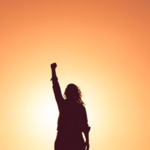
In 2022, Roe vs. Wade, a landmark case in which the Court struck down several Texas laws that criminalized abortion, was overturned for the first time since its 1973 induction. As a facet of women's rights was returned to the crossfire, larger discussions about women's rights have beeen reanimated. These discussions often devolve into discussions surrounding women's power roles. This exhibition is an attempt to enrich, contextualize, and highlight the discussions surrounding women's power roles. Materials from several collections within the archive were selected for this exhibition with a special focus placed on the recently digitized materials within the Lisa Cowan audio recordings collection. Cowan, a producer, host, and author, among other things, had an active voice in these discussions. At the heart of lesbian discourse is feminist discourse and at the heart of feminist discourse is lesbian discourse.
Sources: Oyez, https://www.oyez.org/cases/1971/70-18
Abortion, Childbirth, Children, Class, Economics, Families, Gender Roles, Group Identity, Heterosexual Women, Intersectionality, Marriage, Oral History, Power, Racism, Radio Free Women, Rape, Religion, Roe V. Wade, Sexism, Sexual Assault, Working-class Feminism



